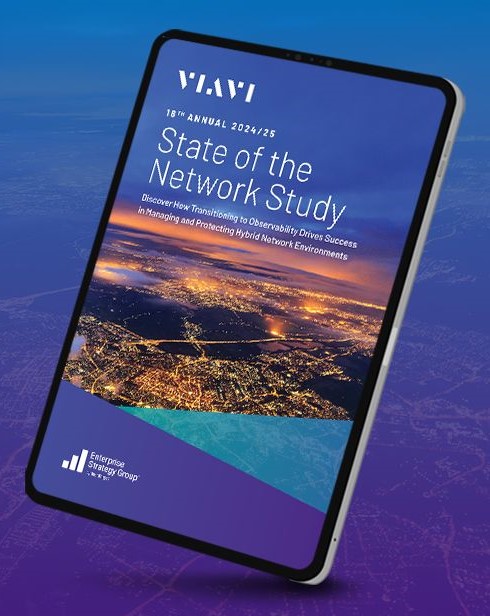
Observability is defined in mathematical terms as the ability to measure the internal state of a system based on only external information. On the other hand, monitoring is defined as a passive data collection process used to measure performance against predefined standards. In other words, network observability practices tend to be proactive, while monitoring tends to be reactive.
We can get to the heart of the matter through a simple analogy: In the healthcare industry, simply monitoring a patient’s heart rate can tell doctors when an emergency or disease state might be present. As monitoring gives way to observability, advanced medical devices can recognize specific heart conditions based on sound waves, electrical signals, and predefined patterns, with a boost from predictive analytics. This minimizes diagnosis time while expediting treatment.
The Network Observability Lifeline
Much like the complex anatomy of the human body, modern, disaggregated networks and hybrid cloud environments present obstacles that can make true network observability elusive. Overcoming these challenges comes down to leveraging and analyzing available forms of network data, or telemetry sources, to their fullest potential, including:
- Flow data: Time-stamped digital records that include a useful IP address, port number, protocol, packet quantity, and traffic data. Enriched flow records also incorporate unstructured network, infrastructure, and user data.
- Packet data: An “ultimate source of network truth” comes from the storage and recall of these parcels of communicated data, each with headers to conveniently record the origin and destination addresses and payload.
- Metrics: Numerical values collected to evaluate the performance and reliability of the network. Commonly collected metrics and key performance indicators (KPIs) include packet loss, bandwidth usage, and latency.
Why Network Observability is Essential
Network monitoring is still important, but no amount of monitoring can provide the real time visibility necessary to effectively manage diverse hybrid and multi-cloud environments, and the unprecedented volume of data traversing them. These challenges, and the consequences of inadequate visibility, are driving an ongoing shift towards observability in the monitoring tools market.
- Reliable service delivery
Fast, reliable service delivery is now a business necessity, especially in industries like healthcare and emergency services that tap into the IoT and rely on real-time communication for their lifeblood. In 2023, over two-thirds of all outages reported cost the impacted organization more than $100,000, attributed to a combination of troubleshooting, repair, and disrupted business.
Mean Time To Detect (MTTD) is an insightful metric that links observability directly to performance and reliability. According to the VIAVI 2024/25 State of the Network Study, organizations embracing observability practices are 3.5x more likely to see significant reductions in MTTD. Observability practices improve service delivery and minimize downtime by providing the visibility needed to analyze complex network behavior and accelerate problem resolution.
- Cloud and hybrid cloud
Conventional monitoring tools provide adequate visibility when network infrastructure and data sources are confined to the data center. Today’s hybrid cloud environments and native-cloud applications present new challenges, based on an inherent lack of ownership and control. Observability platforms seamlessly combine on-premises metadata, packets, and flow data with AWS VPC flow logs or Azure NSG flow logs to enhance visibility and safeguard the end-user experience.
Network observability for hybrid environments is still in its infancy, but few would argue the importance of end-to-end visibility in maintaining performance and security standards for cloud environments.
- Network security, and more
Observability is essential for maintaining network security and minimizing the frequency and severity of data breaches. When visibility is limited, security issues are detected more slowly, while the impact becomes more costly. Flow and packet data, especially when supplemented by cloud data sources and continuous threat exposure management (CTEM) tools, eliminate blind spots that obscure the origin and path of rogue hosts.
According to our State of the Network Study, 78% of the respondents who implemented observability practices saw significant improvements in the ability to secure their environments. They also reported unexpected productivity benefits that came from identifying and mitigating security threats more quickly, thereby freeing up IT teams for more value-added initiatives. Maintaining compliance was another often-reported fringe benefit.
The New Age of Observability
In any industry, the ability to “see” and react to the unseen is invaluable, and those who respond first consistently lead the pack. Observability tools are evolving quickly, incorporating AI and machine learning to keep pace with hybrid network complexity and escalating traffic volumes. The VIAVI Observer Platform brings enhanced, multi-faceted network observability to on-premises, cloud, and hybrid IT environments through a comprehensive suite of network performance and threat solutions (NPTS).
Introducing the VIAVI 2024/2025 State of the Network Study
The 16th annual 2024/25 VIAVI State of the Network Study is now available. Insights culled from over 750 networking and security professionals highlight the role of formal observability strategies in taking service delivery and network security to the next level.
Get the study:

